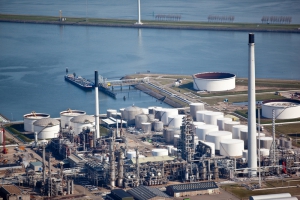Necessary safety precautions at terminal facilities
Terminal facilities play an important role in the storage, transportation and distribution of natural resources. Operators of these terminals must take necessary precautions and perform real-time testing procedures to uncover potential flaws or deficiencies present in production assets before these weaknesses contribute to downtime, spills or other hazards.
Depots are typically located in key ports, with multiple distribution networks funneling in and out of the premises. Further, terminals must be strategically located so that the required transportation infrastructure is capable of extending to destination centers while adequately producing enough throughput to accommodate other downstream facilities such as utility companies and other end-users.
Due to the inherent nature of the assets, materials, liquids and high-risk procedures involved in the standard operation of terminals, the potential for safety hazards is a constant concern. Whether it’s undetected leakage, corroded linings or poor-performing structural components, operators must conduct routine safety audits to mitigate any impact of these mechanical failures.
Fire protection
One of the chief hazards operators must protect against is fire. Due to the highly volatile compound of oil and petroleum products, as well as the combustibility of natural gas, the presence of fire is an immediate threat to operations and the safety of on-site workers and the surrounding environment.
“Incoming tankers and barges should follow strict emergency response plans.”
Storage tank levels should be closely monitored and contain a failsafe overfill protection system so that excess liquids do not exit the structure and spill onto electrical components, wiring or machinery that is known to generate sparks. A report from the International Finance Corporation noted static electricity can build up, potentially creating sparking, which would then ignite hazardous chemicals. Additionally, open flames from destructive tools should be avoided.
All electrical sources should be appropriately grounded while all hot-work maintenance should be supervised and accompanied by backup safeguards. Operators of terminal facilities should also ensure incoming tankers and barges follow strict emergency response plans while loading, as every additional transportation asset has the capacity to increase flammable risks.
Weather-related construction procedures
Though external factors such as weather are difficult to predict, safety precautions should be exercised nonetheless. Lightning is a prominent concern, as a single strike has the capacity to break or weaken the walls of a structure or ignite combustible gases or materials on-site.
Heavy rains, wind, hail, earthquakes and hurricanes also have the propensity to damage production assets. Scattered debris from natural events can interrupt the flow of operations or knockout power sources. Over time, a mixture of rainwater and on-site liquids can form an acidic compound that is detrimental to the environment as well as metal structures. This wastewater must be properly disposed to ensure there is no runoff to surrounding communities or corrosive damage to assets.
To reduce weather-related risks, engineers must first look at the facility’s design with structural integrity in mind. Prior to construction, the materials intended to be used should be tested for mechanical strength and ability to withstand high-risk situations under duress.
During the construction phase and prior to commissioning assets, service providers should conduct preliminary stress tests to determine stability and whether additional safety mechanisms or emergency response plans should be implemented. Depending on the region in which the terminal is located, varying natural events are likely to play a role in the type of testing involved.
For instance, depots located along coastal ports that deliver to offshore tankers should be constructed with tidal waves, high exposure to salt and hurricanes in mind. Similarly, a 2011 report from the U.S. Chemical Safety and Hazard Investigation Board stated there were more than 800,000 oil- and gas-producing plants in the U.S. In many instances, these facilities are located in wooded areas or relatively close communities. These types of storage terminals may be at greater risk for tornado damage, which should be addressed as well.
Operation and closure practices
A 2013 report from the United Nations Economic Commission for Europe found 40 percent of small- to medium-sized oil spills since the ’70s were caused by loading or discharging failures located at terminal facilities.
The operation of routine production procedures is perhaps the most pressing concern on terminal sites. Despite all safety measures being implemented, if these mechanisms are not followed or do not have the intended effect during real-time operation, then it’s evident a breakdown in communication or standard operating procedure has occurred.
Preventing human or mechanical errors is largely a matter of investment and effort on the part of everyone involved. However, unexpected mistakes do happen. This is why there needs to be closure practices in place to ensure the entire operation is shut down in a timely and efficient manner to prevent further loss. UNECE denoted this technique as “design for decommissioning.”
“Technicians employ ultrasonic, thermal and radiography testing non-invasively.”
This means the facility itself should be designed in a way that allows for workers to safely exit the site while equipment is either manually or automatically shut off. By decommissioning on-site assets, internal or external responders can evaluate the situation as quickly as possible, deterring undue harm.
Non-destructive testing techniques
Operators now commonly partner with third-party service providers to complete safety audits using non-destructive testing (NDT) procedures.
UNECE stated a traditional inspection should account for the:
- Age of the installation
- Hazard potential of the terminal
- Condition of the equipment
- Proximity to sensitive ecosystems
However, NDT capabilities extend beyond surface-level metrics, as technicians employ ultrasonic, thermal and radiography testing to evaluate assets non-invasively. These techniques allow terminal facility operators to maintain performance and regulatory compliance at all times by having assets certified against risks.
